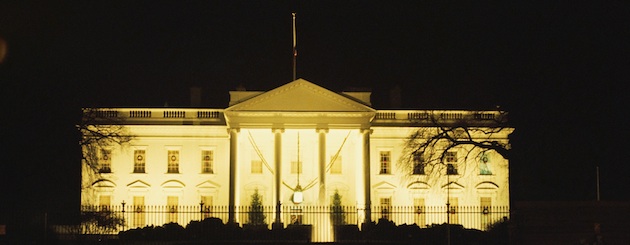

Idea: What the 2016 Election Is Revealing About Direct-to-Customer Media
By Rex Hammock
My interest in the role social media plays in presidential campaigns started February 19, 2004. That was the day I became the first person to blog a private White House meeting with a sitting U.S. president—George W. Bush.* One of the behind-the-scenes dramas of that event was how the White House press office was initially upset with what they viewed as my end-run around the official White House press corps. However, it didn’t take long for the Bush reelection team to recognize that my up-close-and-personal blog post was something worth promoting on their website.
Earlier this week, I was reminded of how far we’ve come when the Pew Research Center issued findings from an in-depth analysis of this year’s presidential campaign as a “direct source of news” to voters. Today, they write, “social media is central to candidates’ outreach to the public, changing the role and nature of the campaign website.”
Highlights from Pew Research analysis of 2016 presidential campaign websites and social media usage
Website content | As in previous election cycles, this year’s campaign websites still serve as a hub for information and organization, but are much “leaner and less interactive” compared to four years ago.
Direct to supporter? | Clinton’s campaign has almost entirely bypassed the news media while Trump draws heavily on news articles.
Website design | Clinton’s website has two main sections for campaign news updates, both of which mimic the look and feel of a digital news publisher but are oriented around original content produced in-house. Trump mostly posts stories from outside news media on his website.
Social media links | 78 percent of Trump’s links in Facebook posts send readers to news media stories while 80 percent of Clinton’s direct followers to campaign pages.
User content | Both sites minimize or exclude user content altogether. Exception: On social media, Trump highlights posts by members of the public. Neither sites have comment sections.
Fundraising | Unlike previous cycles, neither site offers users the option to create a personal fundraising page.
Interest groups | Neither site provides distinct sections addressing specific voting groups or segments of the population. (In 2012, Obama’s campaign offered opportunities to join 18 different constituency groups, while visitors to Romney’s website could choose from nine different voter group pages.)
Issue pages | There are pages that explain the candidate’s position on certain issues but do not provide long-term ways for voters to identify with the candidate or connect with other supporters.
Video and Photography | Clinton was posting about five videos a day on Facebook and Twitter during the time period studied, and embedding video in about 25 percent of both her tweets and Facebook posts. Trump, who averaged about one video a day on social media, was least likely to include regularly updated videos on either social platform. Both post lots of photos across major social media channels.
Bottom Line for Marketers | It’s too early to translate the social media tactics and web strategy of the current candidates into lessons of how a corporate or institutional digital strategy should be run. However, any marketer should find Pew’s analysis instructive and fascinating. Also, while digital media is continuing its fast pace of growth, other recent Pew research reminds us that it will be a while before traditional forms of media are totally replaced by digital media.
*RexBlog.com posts related to the White House blog post and follow-up can be found here.
(Photo: Thinkstock)


